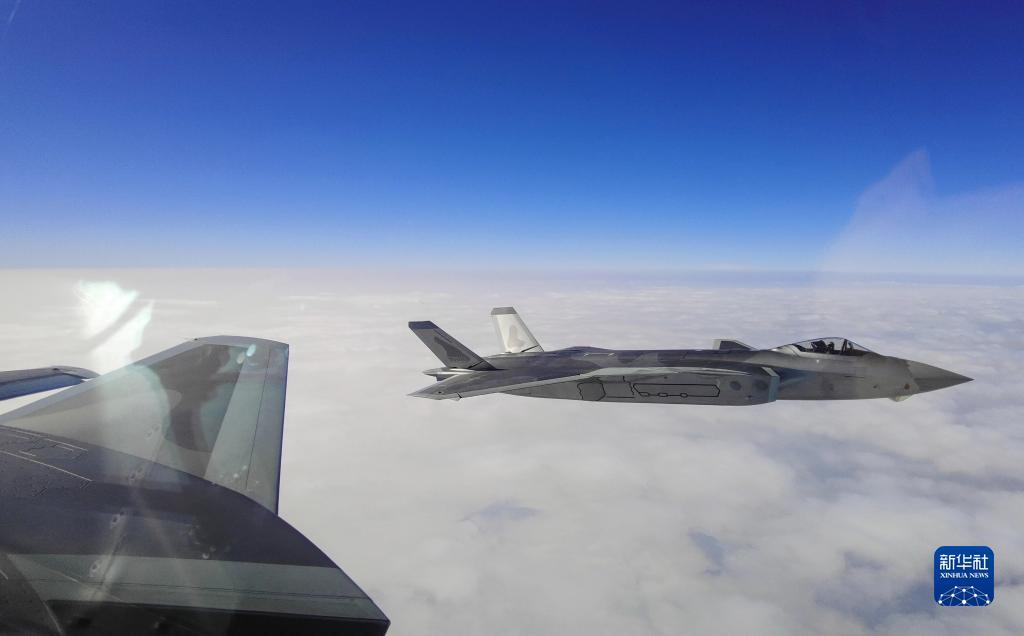As the world struggles to decode the ‘China enigma’, speculating how Beijing will fight its next war, views expressed by its defense specialists provide a glimpse into how it could look at the battleground against the US.
F/A-18 Super Hornets Finally On Cusp Of Beating F-35 Stealth Fighter Jets For Lucrative RCAF Contract?
‘Deal Of The Century’: Why Tata-Airbus Joint Venture Could Pave Way For India To Become A Global Aerospace Hub
China seems to have evolved from its “informationized war” concept to “intelligentized war”, where the primacy of possessing information and an “enhanced situational awareness” can decide the outcome of a battle.
Speaking at a seminar, Lu Jun, Chief Designer of China’s KJ-2000 early warning aircraft, and Cui Jixian, the Deputy Executive Designer of the KJ-500 early warning aircraft, talked about future airborne warning roles to be distributed between various small and big aircraft and assets.
“A future Airborne Warning and Control System (AWACS) will likely not be one single early warning aircraft, but a cluster of platforms that can accomplish different missions and build an information network,” he said.
The KJ-2000 is based on the Russian 190 ton-class Il-76 large transport aircraft, and the KJ-500 is derived from China’s indigenous 60 ton-class Y-8 medium transport aircraft.
Russia Activates S-400, Pantsir-S Anti-Aircraft Missiles To Ward-Off Rafales, Typhoons, F-35s During Zapad 2021 War Games
Eyeing Joint Combat Capability
While individual assets like aircraft, submarines, or tanks can deal with their counterparts in war, the key is to integrate all space, aerial, ground, surface, and underwater systems for “joint combat capability.”

“Future AWACS will definitely become an information network system that includes not only one single aircraft, but a cluster of platforms that can either operate together or alone.
These platforms will play their specially designed roles based on the demands of combat missions, with the final goal being winning the war”, Cui said, noting that both large and small AWCAS platforms are future trends.
A manifestation of this primacy of information sharing is in China’s pride and joy, the J-20 ‘Mighty Dragon’, as its designer Yang Wei calls the concept of maneuverability as “outdated”.
India Pitches Its HAL Tejas Fighter Jets To Australia; Pins Hope On Malaysia For The 1st Elusive Contract
The J-20 stealth aircraft has been rightfully criticized for lagging in kinematic performance of speed, nimbleness, and payload, but that is never what the jet was designed for and purported to fight in the first place.
J-20 Could Be A Game-Changer
The EurAsian Times had reported how the J-20, combining its stealth, radar-reflecting Luneburg Lens (on the rear underside), advanced avionics, Electronic Warfare (EW) and jamming suites and ultra-long-range air-to-air missiles like the PL-15 (range 300 km), will slip past fighter screens and knock out enemy air assets, in a classic ‘hit-and-run’ role.
These will be transport, Airborne Early Warning (AEW), and air-to-air refueling planes that degrade an air force’s logistical and surveillance capability. This is also adopted in China’s plans to keep the US Navy at bay in the Western Pacific.
By using YJ-18, YJ-12 supersonic anti-ship cruise missiles (range 540 km), the PL-15 that outrange the US’ subsonic 240-km range Harpoons and the 161-km AIM 190D and the DF-21D Anti-Ship Ballistic Missile (ASBM), China aims to keep the Americans at bay, never allowing them to get close to the mainland.
In a paper in the Chinese military aviation journal Acta Aeronautica Sinica last July, the J-20’s Chief Designer Yang Wei gave the most extensive insight into the present Chinese military doctrine that puts situational and all-domain awareness and information processing ahead of the performance of individual combat systems.

“Information has now become the deciding factor, as modern fighter jets focus on gaining more information with the help of AESA radars and data chains, while also reducing opponents’ ability to gain information, including using stealth technology and electronic countermeasures.
When aircraft can get more information with these advanced devices, pilots must have extensive knowledge, sharp analysis and sound decision-making to put them to use,” Wei says.
Here, artificial intelligence will help pilots process the information, and help them become mission objective-oriented by leveling up the observe-orient-decide-act (OODA) loop to OODA 3.0.
Here too, it is the range, combat endurance, powerful stealth and heavy payload of air-to-air and air-to-ground missiles and the ability to provide the pilot with “easy-to-understand” battlefield situation images drawing and transmitting to and from all friendly assets in an “integrated network” are vital, according to Yang.
A US Department of Defense (DoD) September 2020 study acknowledges the People’s Liberation Army’s (PLA) belief in the side that has “intelligentized capabilities” for “rapid and efficient decision making” to be able to win a war.
“To quickly observe, orient, decide, and act in an increasingly dynamic operating environment…China is pursuing AI to support future capabilities, such as autonomous command and control (C2) systems, sophisticated and predictive operational planning, and intelligence, surveillance, and reconnaissance (ISR) fusion.
“In addition, the PLA is developing…future command, control, communications, computers, intelligence, surveillance, and reconnaissance (C4ISR) systems will seek to use AI to collect, fuse, and transmit big data for more effective battlespace management and to generate optimal courses of action,” the DoD report said.
- Parth Satam is a Mumbai-based journalist who has been covering India’s defense sector for more than a decade. He maintains a keen interest in defense, aerospace and foreign affairs and can be reached at satamp@gmail.com
- Follow EurAsian Times on Google News




